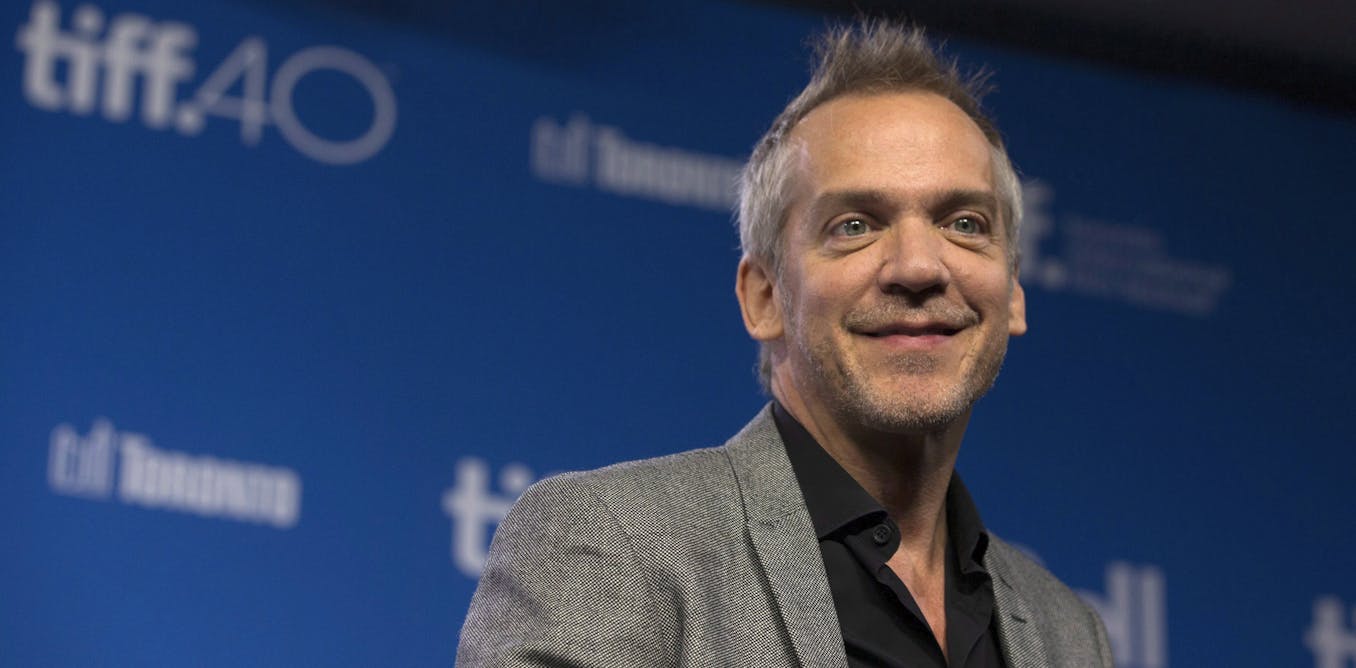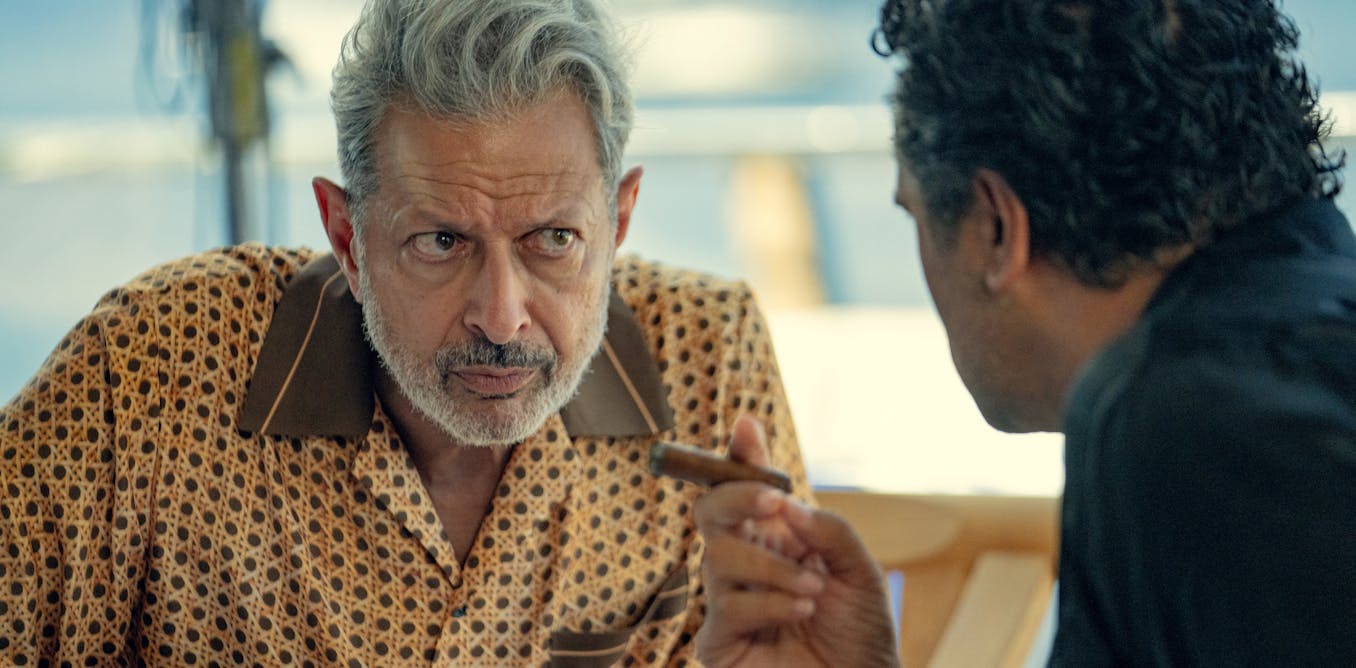As a doctoral student in literature and performing and screen arts, my research lies at the intersection of feminist, film and television studies. In this article, I focus on Vallée’s cinematic style, which is deeply rooted in empathy.
An esthetic of simplicity
Vallée became known to Québec filmgoers with the release of his feature film Liste Noire (1995), but it was C.R.A.Z.Y. (2005) that propelled him to international fame.
This family drama set in the ‘70s continues to move viewers with the heartbreaking father-son relationship it depicts. But the film is slightly different from Vallée’s subsequent work. By the director’s own admission, the film is loaded with visual effects and technical features that were meant to demonstrate his love of filmmaking.
THE CANADIAN PRESS/David Boily
Vallée’s style evolved in his later films: the camera was routinely shoulder-mounted, even for static shots. In an interview, Vallée explained that he saw his job as a filmmaker as capturing actors’ performances. Vallée developed the basics for this process in Café de Flore (2011), shooting dialogues using the shot/countershot technique by moving the camera without cutting the recording. This technique, borrowed from direct cinema and documentary, creates a more natural mise en scène where beauty emerges from simplicity.
Dallas Buyers Club (2013), which was made on a very low budget, gave Vallée an opportunity to refine this technique. Scenes were shot with natural lighting, without spotlights or other equipment hidden behind the camera, which made it possible to film 360-degree shots. With a handheld camera and a very small film crew, the camera follows the course of the scene according to the movements of the actors, affording them more freedom.
This method demonstrated that Vallée allocated as much time as possible on his sets not to technique, but first and foremost to allowing actors to play with the camera, to perform a peculiar dance that places the story at its heart. By accepting a certain level of risk with this approach, Vallée departed from the canons and rules of traditional filming to provide his films a more organic and unique esthetic.
Beauty in imperfection
There is a visual metaphor in Café de Flore that perfectly embodies Vallée’s thematic approach: on several occasions, the protagonist moves away from the camera without leaving the frame. The camera remains in place and the focus shifts to the extras, all of whom have Down syndrome. This is a stylistic device that prefigured Vallée’s approach of shifting the point of view to individuals who are generally relegated to the background of society.
The album The Dark Side of the Moon by the band Pink Floyd is prominent in Vallée’s work and the symbolism is not trivial; Vallée’s work reveals the dark side of human complexity. His films are like a glass prism refracting the colours of light; they act as a magnifying glass that scrutinizes and dissects realities that are as atypical as they are authentic.
The title roles in his works have been held by actors who meet industry beauty standards (Jared Leto, Jake Gyllenhaal, Reese Witherspoon, Vanessa Paradis, etc.), but instead of highlighting these actors’ physiques, Vallée likes to transform and challenge them through their acting and their ability to embody vulnerability and contradiction.

THE CANADIAN PRESS/Hannah Yoon
Vallée’s filmography explores different forms of distress through individuals who go on an initiatory journey, literally, as in Wild (2014) or figuratively, as in C.R.A.Z.Y and Demolition (2015). His protagonists are flawed and in search of meaning. They may have entered into an extramarital relationship like Madeline in Big Little Lies, or struggle with addiction like Ron in Dallas Buyers Club or Camille in Sharp Objects.
Vallée was careful to show their humanity from the very first minutes. His films and episodes almost always begin with a breath, a voice or a humming, which immediately provides an opportunity for the audience to experience the subjectivity of his characters. As for the soundtracks, a key element of his filmography, they are almost always intradiegetic, that is, the characters hear it and they are often the ones who play it. The audience is invited to discover the characters in a different way, through their tastes and their musical choices.
Cinema as an act of communication
If Vallée’s films are so moving, it is because cinema and television were, for him, an act of communication. Even during scriptwriting, the filmmaker showed he was conscious of his future readers, saying he was concerned with providing a pleasant reading experience. From the moment Vallée’s works are put into words, they become part of a dialogue between a sender and receivers. This empathetic vision of scriptwriting proves that the strength of Vallée’s cinema lies above all, in establishing contact between individuals.

THE CANADIAN PRESS/Chris Young
Concern for the audience was also central to his shoots, where Vallée said he made sure to respect the physical distance between camera and actors (and thus between characters and audience) in order to convey the right emotion. Some actors have done multiple projects with Vallée, showing their appreciation of his work. But more importantly, this reassured audiences. Actors Michel Laperrière and Émile Vallée, for example, played similar roles in C.R.A.Z.Y. and Café de Flore, creating a comforting déjà-vu effect for the audience, weaving links between the different stories.
In the editing process, Vallée created an additional layer of meaning through the use of brief flashbacks that gave access to the characters’ thoughts, and through certain choices that gave the films a more ironic tone. For example, in C.R.A.Z.Y., a passage from the opera L’Elisir d’Amore plays as Raymond turns over the Christmas table. Vallée did not seem to feel the need to lead his audience into emotion. Instead, the dramatic effect is accentuated by the contrast between the savagery shown on the screen and the dignified tone of the soundtrack. Vallée trusted his audience and enjoyed creating puzzles for them, letting them draw their own conclusions.
The gift of cinema
Vallée’s filmography offers the audience a complex experience of decentring, while creating a stylistic coherence between the different narratives. During a 2013 interview on the Québec talk show Tout le monde en parle, when asked about his choice of themes, Vallée answered with one word: “humanity.” His films are above all an ode to human complexity.
Reflecting on his career during a master class, he said he considered himself privileged and hoped that his stories would help him “give back a little.” For Vallée, storytelling was truly a gift, meaning not only a great ability, but, above all, something he would leave behind.




















